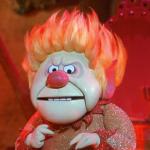Anorexia Nervosa — A Disease, Not a Diet, Not a Phase
 My childhood experience with eating disorders were based on the ABC after-school specials. Come to think about it, ABC introduced me to a lot of age-inappropriate topics. I would run home from Kindergarten (uphill of course) every Wednesday and plop down to watch what I considered to be the most risque hour on television. I wasn’t allowed to watch Dynasty, so teenage pregnancy and marijuana addictions were as sexy as it got. Looking back, it was ahead of its time. No one was talking about eating disorders. Few were aware of anorexia beyond it being a negative adjective ascribed to a too-skinny person. I can’t remember many of the other episodes but I do, distinctly, remember the girl in the hospital with hidden spoons attached to her underwear to increase the number on the scale. Even then, as I munched on Hostess cupcakes and Doritos, my feet barely touching the floor, I knew this girl must be in a lot of pain. Anorexia nervosa is a disease, not a diet.
My childhood experience with eating disorders were based on the ABC after-school specials. Come to think about it, ABC introduced me to a lot of age-inappropriate topics. I would run home from Kindergarten (uphill of course) every Wednesday and plop down to watch what I considered to be the most risque hour on television. I wasn’t allowed to watch Dynasty, so teenage pregnancy and marijuana addictions were as sexy as it got. Looking back, it was ahead of its time. No one was talking about eating disorders. Few were aware of anorexia beyond it being a negative adjective ascribed to a too-skinny person. I can’t remember many of the other episodes but I do, distinctly, remember the girl in the hospital with hidden spoons attached to her underwear to increase the number on the scale. Even then, as I munched on Hostess cupcakes and Doritos, my feet barely touching the floor, I knew this girl must be in a lot of pain. Anorexia nervosa is a disease, not a diet.
Here are some facts:
1. In America, 1 in 200 women have anorexia nervosa. 5 – 15% of people with anorexia are male.
2. While most people develop anorexia as adolescents, it can be diagnosed at any age. It becomes very rare after the age of 40 — clearly a time when food is one of the few pleasures left in life.
3. The characteristics of anorexia are:
– emaciation
– obsession with thinness
– a refusal to maintain a healthy weight
– extreme anxiety about gaining weight
People with anorexia will most likely exhibit odd eating habits, weigh themselves frequently and have a warped body image. They see themselves as fat despite contrary evidence in the mirror’s reflection. Most who have anorexia will starve themselves, but some will also self-induce vomiting and/or abuse laxatives.
4. In addition to above, symptoms or warning signs of anorexia are:
– compulsive exercise
– excessive facial and body hair because of lack of protein
– fainting
– loss of the hair on their head
– cold sensitivity
– cessation of menstrual periods
How serious is it?
Some people will have one episode and completely recover. Others, if they survive, will struggle their whole lives. Some sources report adolescent girls with anorexia have a twelve-time greater risk of dying. It has the highest mortality rate of any psychiatric disease, with somewhere between 5-20% of patients eventually dying from this illness. It affects every major body system. Most notable are the bones and the blood cells they produce, the heart, and the kidneys.
 Whenever I hear Karen Carpenter’s sweet voice, I tear up. What a waste. A reporter calls a beautiful, talented young woman chubby and it ultimately leads to her death. Of course, the reporter is not to blame. The super models are not to blame, as much as I hate to let them off the hook for anything. Our society is somewhat to blame, evidenced by increasing rates of eating disorders and the newish prevalence of eating disorders in young men. The cultural ideal of thinness and its equations with beautiful and desirable, does lead people to strive for this image. Still, anorexia nervosa is a complex, psychological disease caused by the combination of several different factors. Genetic associations have been found. Personality traits that put one at higher risk are low self esteem, obsessive compulsive behaviors and a need for perfection.
Whenever I hear Karen Carpenter’s sweet voice, I tear up. What a waste. A reporter calls a beautiful, talented young woman chubby and it ultimately leads to her death. Of course, the reporter is not to blame. The super models are not to blame, as much as I hate to let them off the hook for anything. Our society is somewhat to blame, evidenced by increasing rates of eating disorders and the newish prevalence of eating disorders in young men. The cultural ideal of thinness and its equations with beautiful and desirable, does lead people to strive for this image. Still, anorexia nervosa is a complex, psychological disease caused by the combination of several different factors. Genetic associations have been found. Personality traits that put one at higher risk are low self esteem, obsessive compulsive behaviors and a need for perfection.
If you suspect that someone is suffering with anorexia, get him or her help. Again, it is a treatable disease, not a phase.




















